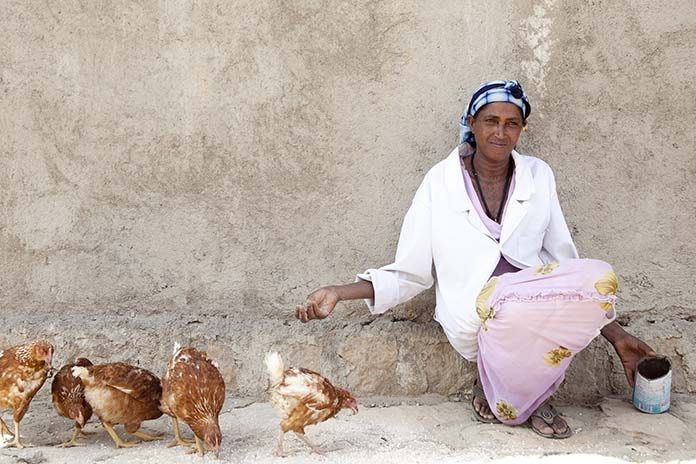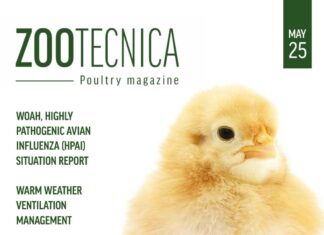
Village chicken farming is ubiquitous in smallholder systems, contributing to household, local and national economies under diverse environmental, economic and cultural settings. However, they are raised in challenging environments where productivity is low while mortality is high. There is much interest in utilizing indigenous genetic resources to produce a chicken that is resilient to its environment, while at the same time providing the basis of an economically sustainable enterprise. Globally, however, a wide variety of interventions have so far proved unable to deliver sustainable improvements. Here we show that regional differences in trait preferences and parasite burden are associated with distinct chicken gene pools, probably in response to interactions between natural and human-driven (economic and social) selection pressures. Drivers of regional differences include marketing opportunities, cultural preferences, agro-ecologies and parasite populations, and are evident in system adaptations, such as management practices, population dynamics and bird genotypes.
Research led by the University of Liverpool, in collaboration with UK and African partners, reveals that, despite often appearing similar to each other, village chicken populations in Ethiopia are actually genetically diverse and highly adapted to their local physical, cultural and social environments. Researchers have investigated the genetics and disease challenges of chickens from two districts of Ethiopia; Horro, around 300 km northwest of Addis Ababa and Jarso, around 400 km east of Addis Ababa, along with the nature of the production system and the socioeconomic reasons why chickens are kept.
Genomic analysis conducted at The Roslin Institute revealed that the village chickens showed high levels of adaptation to their local ecosystems, resistance to disease and to the management and cultural variations of their environment. On top of adaptation, the data obtained by all partners suggest that there have been multiple introductions of chickens in Ethiopia that may relate to trade routes, religion and culture.
Challenges and opportunities
Chicken production is an important agricultural activity in many nations and can play an important role in reducing poverty and improving nutrition and gender empowerment. Whilst many people are able to raise village chickens and they require few inputs, productivity is low and constrained by, among other things, disease, predation and scarcity of feed. There is much interest in trying to breed a chicken resilient to its environment, whilst providing the basis of an economically sustainable enterprise. Globally, however, a wide variety of interventions have so far proved unable to deliver sustainable improvements. Published in the journal “Nature Sustainability”, the study suggests that in order to be successful, development interventions, including breeding programmes, need to consider this diversity and be tailored and designed to allow for flexible implementation, depending on local needs. The research was carried out by the University of Liverpool in collaboration with the Universities of Edinburgh and Nottingham, the International Livestock Research Institute, the Royal Veterinary College and Wageningen University. Dr Androniki Psifidi and Professor Olivier Hanotte, who played a key role in this project, continue working in new projects trying to provide sustainable solutions for chickens as part of the Centre for Tropical Livestock Genetics and Health.
Source: This article has been prepared from materials provided by the University of Liverpool Press Office (simon.wood@liverpool.ac.uk +44 (0)151 794 8356).

















